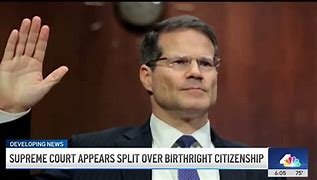In a rare May 2025 session, the Supreme Court, with its 6-3 conservative majority including three Trump-appointed justices, took on emergency appeals tied to President Trump’s aggressive immigration agenda. Two key issues dominated the hearings: the legality of nationwide injunctions and the scope of birthright citizenship.
Immigration Orders Under Fire
The Court’s May 15 hearing focused on Trump’s executive order denying birthright citizenship to children born in the U.S. unless one parent is a citizen or lawful resident. Critics argue the policy challenges the 14th Amendment and could affect an estimated 150,000 children annually. The following day, the Court unanimously blocked a separate Trump order to deport Venezuelan immigrants under the Alien Enemies Act, returning the case to lower courts and drawing criticism from Trump.
These actions reflect broader tensions over the administration’s second-term immigration reforms. Trump’s executive orders have repeatedly faced legal challenges and nationwide injunctions issued by federal judges in multiple states. His administration contends that such injunctions obstruct lawful executive authority.
Birthright Citizenship and Legal Precedent
The citizenship case reexamines the 14th Amendment’s Citizenship Clause, which grants automatic citizenship to nearly all born on U.S. soil. The precedent was set in United States v. Wong Kim Ark (1898), affirming birthright citizenship even for children of immigrants. The Trump administration argues that children of undocumented or temporary visa-holding parents are not “subject to the jurisdiction” of the U.S., and thus not guaranteed citizenship.
During oral arguments, Justices Brett Kavanaugh and Amy Coney Barrett questioned the policy’s feasibility and legality, highlighting its broad impact on hospitals and federal agencies. Procedural concerns about nationwide injunctions dominated much of the hearing.
The Nationwide Injunction Debate
Nationwide injunctions, which allow a single district judge to halt federal policy across the country, have become a flashpoint. Since January 2025, courts have issued 39 such injunctions against Trump’s second-term policies—on top of 64 during his first term and 14 under President Biden.
The Trump administration argues these injunctions encourage “judge shopping” and disrupt executive governance. Conservative justices like Clarence Thomas and Samuel Alito have expressed skepticism, with Thomas calling them “legally dubious.” Solicitor General D. John Sauer warned the Court that injunctions allow “any judge anywhere” to block national policy.
Opponents of limiting injunctions—including 22 states, advocacy groups, and several lower court judges—argue they are essential for ensuring uniform laws and protecting rights nationwide.
What’s at Stake
The Court could rule in several ways:
- Uphold Nationwide Injunctions – Keeping Trump’s citizenship order on hold across the country.
- Limit Injunctions – Restricting them to plaintiffs, allowing the policy to take effect elsewhere, potentially leading to patchwork citizenship rules.
A decision narrowing injunctions would mark a significant shift in judicial power, potentially strengthening the executive branch. Legal scholars, like Notre Dame’s Samuel Bray, argue this could prevent rushed rulings and restore proper legal process.
Conclusion
As it prepares to rule by June 2025, the Supreme Court finds itself at the center of pivotal debates over immigration, constitutional rights, and judicial restraint. Its decisions will shape not only Trump’s immigration policies but also the future balance between courts and the presidency.
